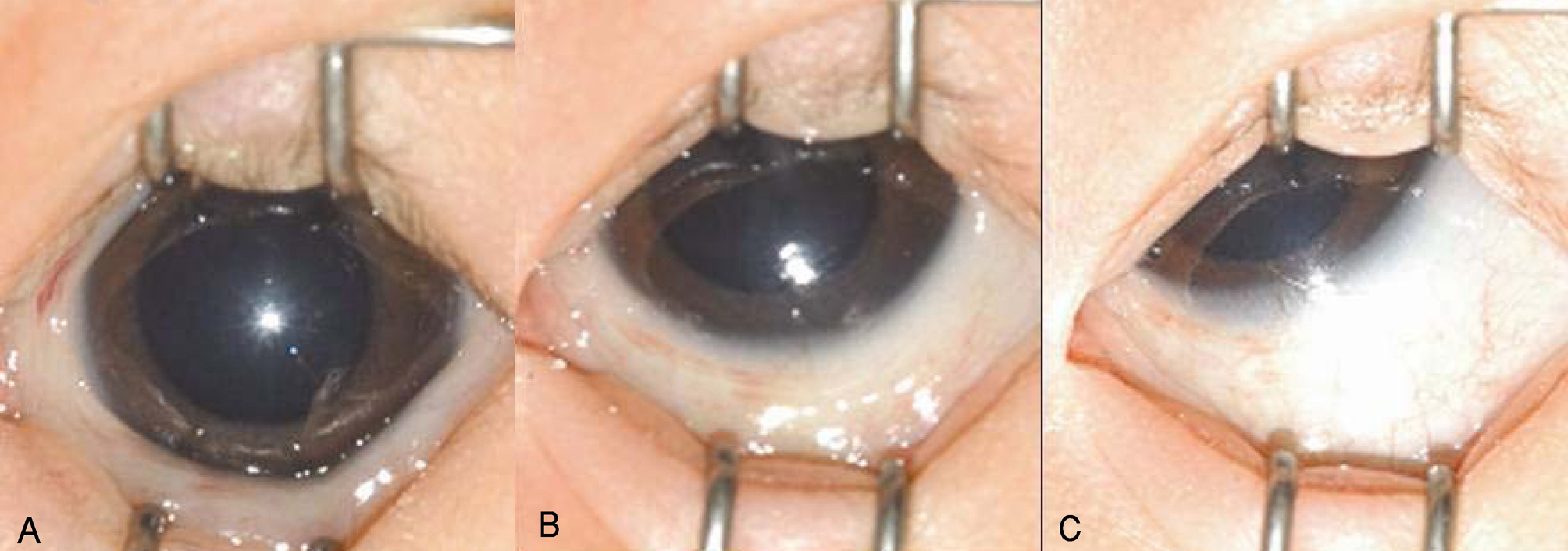J Korean Ophthalmol Soc.
2007 Dec;48(12):1694-1698.
Bell's Phenomenon and Conjunctival Injury in Screening Examination for Retinopathy of Prematurity
- Affiliations
-
- 1Department of Ophthalmology, College of Medicine, Pusan National University, Pusan, Korea. jlee@pusan.ac.kr
Abstract
-
PURPOSE: Bell's phenomenon (BP) was known not to be common in premature babies. If manifested, it may be detected on screening examinations for retinopathy of prematurity (ROP), indicating that conjunctival injury may have occurred. We studied correlations with BP and conjunctival injuries.
METHODS
Ninety-two eyes of 46 premature babies, ranging from 36 to 38 weeks of gestational age, underwent screening examination for ROP. Rotation of the eyeball was evaluated with an inserted speculum. After observing temporal and nasal ora serrata with indentation, conjunctiva was examined for any possible damage.
RESULTS
BP was observed in 50 of 92 subjects (54%). Notable conjunctival hemorrhage was found in 7 of 50 eyes (14%) with BP and in 2 of 42 eyes (5%) without BP. Stronger BP is correlated with severe injury to the conjunctiva (p<0.001).
CONCLUSIONS
Bell's phenomenon (BP) may manifest in screening examinations for ROP. Manifestations of BP are related to conjunctival injury.
MeSH Terms
Figure
Reference
-
References
1. Bell C. On the motions of the eye in illustration of the uses of the muscles and nerves of the orbit. Philos Trans R Soc Lond. 1823; 113:166–86.2. Francis IC, Longhhead JA. Bell's phenomenon: A study of 508 patients. Aust J Ophthalmol. 1984; 12:15–21.3. Ferrer JA. Conclusions from Bell's phenomenon variants. Trans Am Acad Ophthalmol Otolaryngol. 1973; 77:714–20.4. Snir M, Kremer I, Kuperman A, et al. Bell's phenomenon in newborns and premature babies. Br J Ophthalmol. 1996; 80:553–5.
Article5. American Academy of Pediatrics. Section on Ophthalmology. Screening examination of premature infants for retinopathy of prematurity. Pedriatrics. 2001; 108:809–11.6. Maheshwari R, Kumar H, Paul VK, et al. Incidence and risk factors of retinopathy of prematurity in a tertiary care newborn unit in New Delhi. Natl Med J India. 1996; 9:211–3.7. Termote JUM, Schalij-Delfos NE, Wittebol-Post B, et al. Surfactant replacement therapy, a new risk factors in developing retinopathy of prematurity? Eng J Pediatr. 1994; 153:113–6.8. Rekha S, Battue RR. Retinopathy of prematurity, Incidence and risk factors. Indian Pediatrics. 1996; 33:999–1003.
- Full Text Links
- Actions
-
Cited
- CITED
-
- Close
- Share
- Similar articles
-
- Bell's Phenomenon during Screening Examination for Retinopathy of Prematurity
- Conjunctival Hypertrophic Scar Following Cryotherapy for Retinopathy of Prematurity
- A Clinical Study of Retinopathy of Prematurity
- Screening Examination for Retinopathy of Prematurity with Dual Parameter Protocol
- The Effect of Cryotherapy and Laser Photocoagulation for the Retinopathy of Prematurity



